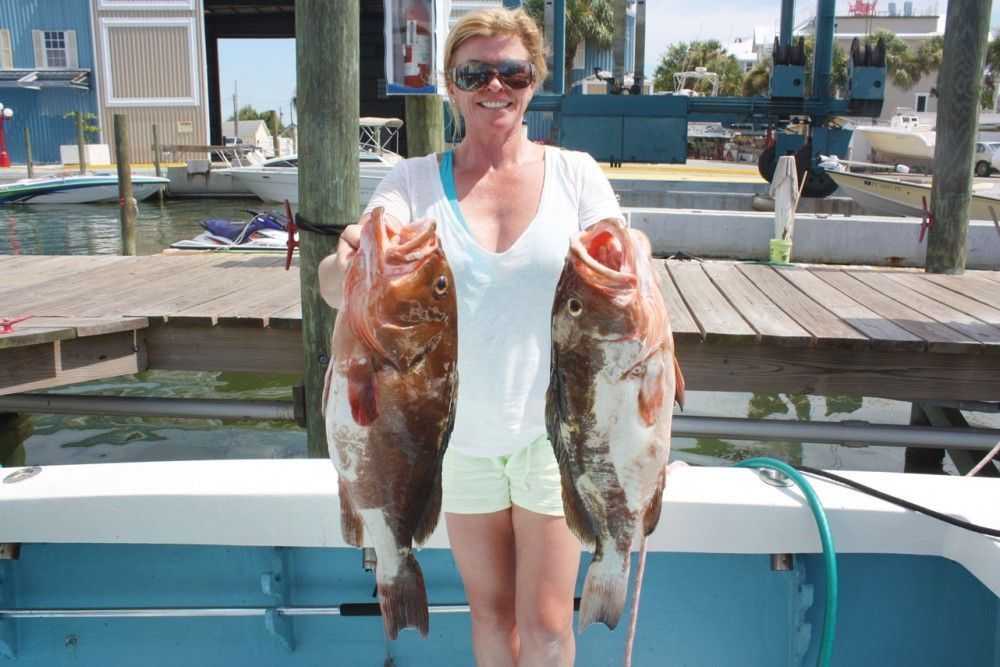Caption: Capt. Larry McGuire, with Show Me The Fish Charters, caught this nice gag grouper offshore of Anna Maria Island, Fla.
Go For Grouper
By CAM Staff
Grouper are some of the best tasting fish in the ocean. But if you’re going to put one on your plate, it’s going to make you work for it.
The occasional grouper can be had within a mixed bag of fish on nearshore or offshore structure, but if the idea is to specifically target grouper, and big ones, it makes sense to switch up your tactics.
Although gag and other grouper are often found in shallower water, grouper do seem to prefer deeper depths than do other bottom fish. They also like their holes, which they hide in to ambush food and also use to their advantage if they are hooked. For these reasons, rocky bottoms and ledges in deep water is where the search should begin for anglers specifically targeting many of the grouper species. Some captains won’t even bother looking in an area if it’s in less than 200 feet of water.
Some things to keep in mind when studying an area on your electronics is what looks good for other bottom fish may not be the ticket for grouper. If you’re marking a ton of fish on a structure, they are probably not grouper, which will hug the bottom or stay hidden under ledges and in holes. All those other fish making arches on your screen are going to make it very hard to get bait down. Seeing baitfish near the bottom is a good thing, but wads of larger fish higher in the water column will make for a frustrating day if what you want to catch is grouper.
You have to put in time on the water to find the ledges or rockpiles grouper prefer. Once you’re over that structure, you’ve got to put in time meticulously working it to lure out the fish. Some prefer to drift and some prefer to anchor, but the key to catching grouper is to put the bait in front of them without getting snagged in the structure. Blue runners, pinfish, pilchards and really anything live and wiggly make good baits, and cut baits work well, too, depending on the species you’re after.
Some captains even swear by artificials. A heavy jig will shoot down past the undesirables to the bottom where grouper are. And with artificials, the fight is immediately on when there’s a bite. This gives the angler a better shot at hauling the fish away from line-eating structure, which may be a grouper angler’s worst enemy.
All that deep structure, and a grouper’s propensity for burying itself in it means gear should be heavy. The manual labor begins once the hook is set. Heavy rods and reels capable of holding a lot of 100-pound braid are the minimum requirements, with 125-pound leaders a good bet unless the fish will let you get away with heavier. The drag should be locked down to pull fish up off the bottom quickly, so the tackle has to be stout.
A back-breaking fight is what it takes to land a big grouper, but once it makes it to the dinner table, it will all seem worthwhile.
[easy-social-share]
